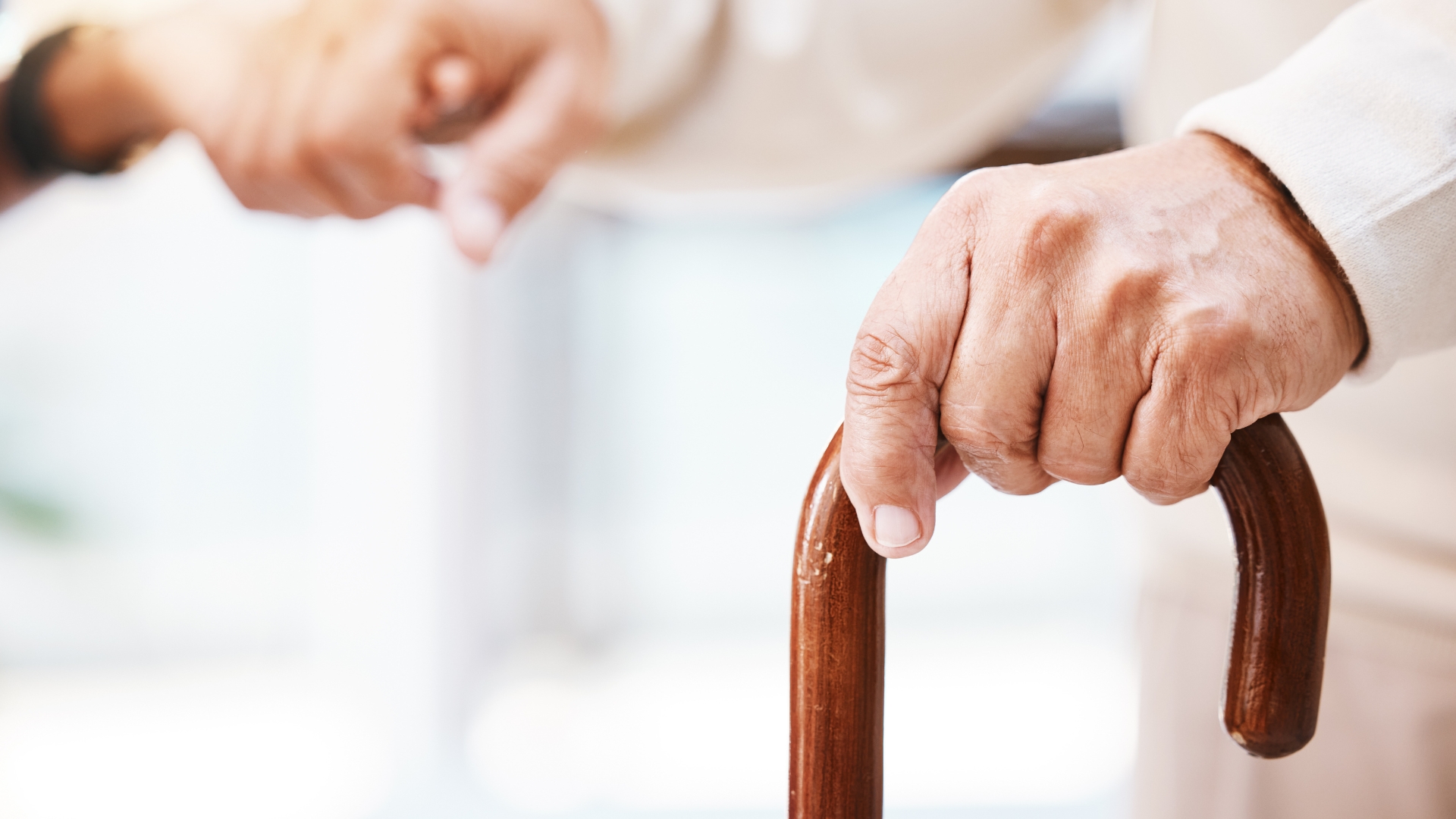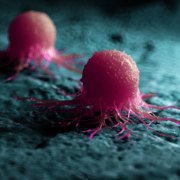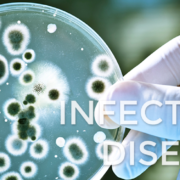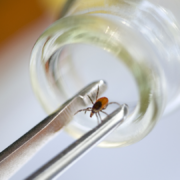Lyme Disease Defense Kit: A Complete Arsenal for Natural Elimination
To overcome something as mind, body, soul-affecting as Lyme disease, you’ll need to stock your defense kit with the right resources. There’s no one-and-done approach to combat such an invasive enemy successfully. Contrary to popular belief and conventional medicine, with a positive attitude, commitment, and the right combination of integrative natural therapies, you can claim victory.
Lyme Disease Crash Course
The first step to eliminating Lyme disease is to know your enemy.
Where Does Lyme Disease Come from?
Lyme disease is caused by the bacterium Borrelia burgdorferi, which some ticks carry and spread through their saliva. There are two ticks capable of transmitting the bacteria to humans, the black-legged tick (Ixodes scapularis) and the western black-legged tick (I.pacificus). Blacklegged ticks are found in 37 states across the eastern United States, but 95% of confirmed Lyme disease cases come from just 14 states in the northeast and Midwest.
According to results published in the Journal of Medical Entomology, the black-legged tick has undergone a population explosion and has doubled its range in the past two decades. This, of course, contributes to the fact that Lyme disease is one of the fastest-growing vector-borne infections in the United States, with well over 300,000 diagnosed cases a year as reported by the Center for Disease Control.
These pesky and pestilent arachnids—ticks are actually not insects but rather relatives of spiders, scorpions, and mites—wait patiently on leaves, blades of grass, and low bushes for a host to brush by within reach of their front legs. Ticks are like mini-vampires with a voracious appetite for blood, and it is through their salivary glands that the spiral-shaped Borrelia burgdorferi can enter the human bloodstream. It is believed that it takes upwards of 36 hours for the bacteria to be transferred from tick to host, but some new studies suggest far less time is needed.
What Does Lyme Disease Feel Like?
Once infected, the most common initial symptoms to manifest are similar to a mild flu. However, it is possible to be totally asymptomatic or have very non-specific symptoms, such as myalgias (muscle aches), malaise (general feeling of discomfort), and or fatigue. The classic bullseye rash (erythema migrans) many associate with Lyme disease is not a full-proof way to tell whether or not you’ve been infected. Less than 50% of infected persons report ever having a noticeable round rash. The easiest way to eradicate Lyme disease is through early detection. This, however, is far easier said than done, as you’ll soon find out why.
If the infection is not promptly or effectively treated early on, late disseminated Lyme disease will set in within months of the bite. At this stage, the bacteria have spread throughout the body, and the infection and co-infections can present themselves in an array of debilitating symptoms, including, but not limited to arthritis, migraines, vertigo, sleep disturbances, brain fog, numbness in the extremities, heart palpitation, facial nerve palsy, encephalitis, and severe fatigue.
The window for early treatment is slim, and to receive early treatment, a prompt and accurate diagnosis is key. Unfortunately, misdiagnosis, which includes false negatives, is high—B. burgdorferi is a tricky bugger.
Why Is It Called the Great Imitator?
When Lyme disease goes undetected and crosses the threshold from an acute to chronic infection, it often likes to pretend it’s something else. The unnerving nickname, The Great Imitator, was bestowed upon this disease for its ability to imitate all sorts of other chronic conditions. Rheumatoid arthritis, multiple sclerosis (MS), fibromyalgia, chronic fatigue syndrome, amyotrophic lateral sclerosis (ALS), Alzheimer’s disease, lupus, and depression have all taken the blame for Lyme disease’s malevolent manifestations.
Lyme disease’s vast-ranging symptomatology significantly contributes to why so many of us unknowingly endure the disease for years before we realize we’ve been misdiagnosed.
How is Lyme Disease (Conventionally) Diagnosed?
Standard testing for Lyme disease includes the enzyme immunosorbent assay (ELISA) test and the Western Blot, both of which are used to measure antibodies against B. burgdorferi. Typically, the ELISA test is administered first, and if you test positive, then a Western Blot is performed.
Your body needs time to mount an immune response to the infection, though, so these testing modalities cannot be performed during the first few weeks of the initial infection. Borrelia can infect the white blood cells, which hinders their immune response and potentially can lead to a false-negative result. There is a small window of opportunity when Borrelia moves through the bloodstream, and the immune system is functioning well enough to produce antibodies for these pathogens. This is the window when these tests will produce a positive result.
Unfortunately, many miss this window of opportunity and therefore go undiagnosed, which then leads to a disseminated infection. Because the blood tests for Lyme disease are so inaccurate, the CDC recommends that a diagnosis be given based upon four factors: tick exposure, endemic locations, symptoms, and medical history.
What Does Standard Treatment for Lyme Disease Entail?
Whether you have acute Lyme disease or a full-on disseminated infection, the standard approach to treatment is antibiotics. The most commonly used antibiotics are doxycycline, amoxicillin, and cefuroxime. If a 10 to 21-day cycle doesn’t do the trick, or a disseminated infection has already occurred, longer courses of antibiotics or intravenous treatment with antibiotics will likely be prescribed. If this type of treatment is started early enough, it can be effective.
However, “this standard treatment fails to eliminate chronic reemergence of symptoms. Lingering responses from the immune system have played a key role in chronic symptoms associated with Lyme disease. This condition has even earned its own name, post-treatment Lyme disease syndrome (PTLDS), and can persist for years,” explains Innovative Medicine writer Victoria Frankel, MS.
Heavy use of antibiotics also comes with its own side effects, including inducing cellular toxicity, gut microbiome disruption, energetic dysfunction, and immune system imbalance which is important to consider when a long-term treatment plan is necessary.
Can Chronic Lyme Disease Be Cured?
The most widely accepted answer is no. Once the infection has jumped from acute to chronic, there is no cure, only symptom management, and even worse, more antibiotics. Chronic Lyme disease can feel like a death sentence; it’s just the lot you’ve been dealt and now you have to suffer through it for the rest of your life, and that’s that. Wrong! However, a cure is far from a quick fix.
One reason why most believe there is no remedy for chronic Lyme disease is that there is no quick fix for it; and, we’ve become a quick fix or bust kind of society, especially when it comes to health. To overcome such a devastating disease, a mind-body shift is necessary.
Think of it like you’re preparing for battle, but in a not so gruesome and violent way. To destroy the enemy and all of its co-conspirators, you must utilize the innate healing strength your body has as an interconnected force of systems and natural functions.
The problem is, Lyme disease, its co-viruses, and preexisting conditions inhibit the body from doing what it was designed to do effectively. The key to success is to create an environment or battlefield where pathogens can no longer exist. This is a multiple-step process.
An Innovative Approach to Treating Lyme Disease
The human body is an interconnected system of resources. Our internal environment is always changing and is unique to each of us. For these reasons, there is no one-size-fits-all or blanket approach to curing Lyme disease. A successful treatment plan includes a variety of integrative therapies that address the root causes of the specific malfunctions taking place in the body as a result of the disseminated infection and other invasive pathogenic organisms, i.e., co-viruses, bacteria, fungus, and parasites.
Lyme disease is a multi-faceted, multi-systemic disease, which is precisely why a multi-faceted, multi-systematic treatment plan that addresses energy function, inner milieu, immune response, oxygenation, and toxicity is required to eliminate it.
It is also valuable to understand that when the body has been fighting an infection for an extended period of time, in addition to the ongoing challenges and energy drain the infection itself causes, the brain can also maladapt. This is known as limbic system impairment and can cause the body to stay in fight-or-flight mode. When the body is stuck in this state, sympathetic mode, resources that would normally be available for working energy, immune function, and healing are now being consumed elsewhere.
This is one of the reasons why most Lyme patients feel overwhelmingly depleted. The brain actually becomes sparse of key metabolites and neurotransmitters. Basically, the body is being conditioned to feel bad when it is stuck in this sympathetic mode.
The good news, though, is that the following five phases of Lyme treatment and the customized array of integrative therapies and lifestyle practices you’ll learn about below were developed to retrain, reset, and return your body to its desired homeostasis by creating an environment conducive to healing.

5 Phases of Lyme Treatment
Dr. Thomas K. Szulc, MD, explains that “there is no set Lyme protocol—the aim is to identify all underlying dysfunction and contributing factors and personalize and prioritize each patient’s treatment. What may be right for one patient does not mean it is right for another. Although each patient will require a tailored approach with great specificity, there is a pattern that Innovative Medicine sees that is often associated with the successful treatment of patients suffering from Lyme disease.”
Identify All Underlying Dysfunctions on All Levels
“In general, conventional medical tests are based in Newtonian science from the 17th century. They have the ability to show our biochemical function as well as pathological manifestation, but only very seldom do they reveal the causes of the conditions, which are not always obvious when symptoms manifest in our bodies,” Dr. Szulc exclaims. It is this incompleteness in general diagnostic approaches that inspired Dr. Szulc to develop a unique system for not only diagnosing Lyme disease but evaluating the state of the body on a physical, biochemical, psycho-emotional, and spiritual level.
The idea here is to create a comprehensive picture of the patient so that the proper therapies can be assigned to establish an environment conducive to self-healing—which the body was designed to do, because, believe it or not, you are your own cure.
Begin a Prioritized and Comprehensive Treatment Plan
While wholly customized for each patient, the first stage of treatment includes several weeks of various oral and intravenous detoxification methods, tissue oxygenation, pH balancing, and initial antimicrobial therapies. The aim here is to restore the inner milieu, our bodily environment. The treatment plan’s specifics will be based on the holistic information gathered from the Bioresonance Analysis of Health.
Correct Energetic Imbalances
We are energy. Our physical, emotional, and spiritual body is composed of energy. Everything on our planet is made of energy, and the universe is an infinite field of energy expressing itself in all different frequencies. Energetic balance is synonymous with optimal health. When there is an energetic imbalance, pathological havoc can occur as every manifestation of disease begins with an energy dysfunction.
Personalize Pathogen-related Treatments
This phase includes nutritional and emotional support, stronger antimicrobial treatments, complete with natural compounds that specially target pathogens, and the continuation of detoxification therapies.
Address Residual Problems
Residual problems can be anything from ongoing emotional trauma to heavy metal toxicity. Fully recovering from Lyme disease is far more than simply eradicating the infection. As you’ve learned, this multi-faceted, multi-systemic disease can cause a wide range of physical and psycho-emotional problems. To be free of Lyme disease, all root issues must be confronted.
7 Integrative Therapies for Combating Chronic Lyme Disease
Each of us is unique. So, to treat Lyme naturally, the appropriate combination of therapies will also be unique to you. With the five phases of Lyme treatment in mind, the following seven integrative therapies support those steps.
ACMOS Method
One approach to correcting energetic imbalances is the ACMOS (Analysis of the Compatibility of Matter on the Organism and its Synergy) method. This non-invasive therapy aims to restore the body’s energetic qualities and return its proper self-organization and adaptation ability so that energetic balance can be obtained.
Using several sophisticated instruments and devices and specific essential oils, herbs, and homeopathics, the ACMOS method works to identify and release blockages in the bio-energetic system of the body. Strengthening the body energetically also allows it to cope better with diverse aggressions.
Quantum Resonance Crystal Bed
Quantum Resonance Crystal Bed is an energy medicine-based technology that incorporates crystals, UV LED phototherapy, specific frequencies, pulsed electromagnetic fields, binaural sounds, essential oils, and orgone therapy aimed at supporting the body’s ability to self-heal and return to a state of homeostasis. The benefits include reducing inflammation in the body, cellular level regeneration, immune response regulation, detoxification, and pH balance.
Halo Biophotonic Therapy
Harnessing the power of plants and light, Halo therapy uses special LED lights to shine a specific frequency of ultraviolet light through various vials filled with herbs, plants, and amino acids. Through the combination of perfect frequency and vial formation, this therapeutic treatment delivers powerful energetic properties to the body that promote a wonderful range of benefits that are especially beneficial to those suffering from Lyme disease.
Benefits include normalizing cellular function, supporting the immune system, opening up pathways for detoxification, and reducing pain. Halo therapy also has anti-bacterial, anti-viral, anti-fungal, and anti-inflammatory properties.
Biomagnetic Therapy
Also called terrain restoration therapy, this all-natural treatment utilizes magnets to re-establish normal cellular milieu and equalize the body’s pH level back to around 7.4, the alkaline side of neutral. Neutralizing the body’s pH level helps create an inhospitable environment for pathogens, which is precisely what needs to take place to eradicate Lyme and its nasty co-invaders.
“Pathogens appear when there are fundamental distortions in the pH level. A body that is too acidic (low pH) is prone to viral and fungal infections and degenerative processes. A body that is too alkaline (high pH) is subject to inflammation, swelling, pain, bacterial and parasitic infections,” explains the IM Health Team.
A major component of natural Lyme disease eradication is changing our internal environment from pathogen-friendly to a place where pathogens simply cannot subsist in. Biomagnetic therapy has proven to be highly effective at restoring biological terrain and eliminating viral, bacterial, fungal, and parasitic infections.
Ultraviolet Blood Irradiation Therapy
Also known as photoluminescence, hemo-irradiation, photodynamic therapy, and oxidative phototherapy, UBI/UVB is an intravenous treatment method for most blood-borne viruses and related conditions. The procedure involves exposing the blood to specific ultraviolet light to enhance the body’s natural immune response so it can effectively fight off infections.
Ultraviolet blood irradiation has shown to increase oxygen absorption in body tissues, destroy fungal, viral, and bacterial growth, and improve the body’s ability to detoxify. The UV light used actually kills infecting organisms in the blood while boosting the immune system at the same time.
Phospholipid Exchange Therapy
Phospholipid Exchange therapy has shown the ability to significantly improve the outcomes of patients suffering from Lyme disease and other chronic disorders. This intravenous therapy works by delivering the right amount of fats and oils in a bioavailable form to cell membranes and membranes within cells.
“Lipids serve as the basis of every cell in our body. These lipids, which include phospholipids, glycolipids, and cholesterol, are essential for a host of functions necessary to maintain health. However, when exposed to external factors like toxins, pathogens, and different stressors, your DNA, cell membranes, and mitochondria can become incredibly dysfunctional,” explains the IM Health Team.
The therapy works to eliminate stored toxins and helps stabilize membrane functions. The benefits include enhancing cellular activities of the liver, nervous system, cardiovascular system, and the immune system, and well as remedying disturbances in methylation (a process that helps repair your DNA, regulate hormones, support detoxification, and produce energy, among other important functions for complete wellbeing) due to toxic exposure.
NAD/Brain Restoration Plus (BR+)
NAD/Brain Restoration Plus “is a comprehensive and natural detox and nutrient-based treatment.” This intravenous therapy has been clinically proven to balance the neurotransmitters in the brain, improve cognitive functions and mental clarity, and speed up the recovery rate of psycho-emotional issues following the treatment of chronic conditions. Nicotinamide adenine dinucleotide (NAD) “is an element that reacts with the oxygen in the cell’s mitochondria in order to create energy” for basically everything. NAD deficiency occurs naturally as we age and is accelerated when we are battling chronic conditions, such as Lyme disease. A deficiency in NAD, which many of us have, can make you feel like you are having an energy crisis with a side of brain fog. Through this intravenous infusion, NAD deficiency can be reversed.
Additional Ways to Support a Recovering Mind and Body Bottom Line
Diet
A healthy, clean, balanced, and nutrient-dense diet is key to holistic health. While a poor diet can contribute to chronic disease perpetuation, on the flip side, the right food choices can actually heal you. We all too often forget that Mother Nature has provided everything we really need to thrive.
The pandemic of processed food and pesticide-laden produce, while penny-cheap to purchase, has cost us our health. In light of Lyme disease and all the possible combinations of co-infections and conditions, one of the best ways to support your immune system and an anti-pathogen milieu is through an alkaline-based diet.
The foods to focus on are dark leafy greens and vegetables, nuts, seeds, legumes, whole grains, and fruits that are organic and non-GMO. It is imperative to remove the burden of heavy metals, pesticides, chemical preservatives, dairy, red meat, and sugar on your lymphatic system, as well as your gut and digestive system. Gut health and immune health go hand and hand, as 70% of your immune system is actually in your gut.
Meditation and Mindfulness
Whether you’ve been battling Lyme disease for less than a year or over a decade, the psycho-emotional intensity of such a debilitating and devious disease is undoubtedly draining. You’ve likely felt anger, frustration, depression, anxiety, exhaustion, and hopelessness in the face of your unique Lyme disease war. As you’ve experienced, those negative feelings are potent but offer no relief and resolution. On the opposite side of the spectrum, though, positive feelings can provide relief and even promote healing in the mind, body, and spirit. This is because there is a direct link between the emotional and the physical body.
Our thoughts and emotions can manifest positive or negative outcomes when it comes to healing and recovery. Meditation and mindful breathing are incredible tools to alter mood and mindset from doom-and-gloom to one of positive higher consciousness. Learning to replace hopelessness, anger, and anxiety with acceptance, courage, and calmness will further facilitate a healing response. There are all sorts of meditation and controlled breathing approaches to help you find your peace in the midst of a seemingly chaotic chapter in your life.
Sleep and Stress Management
Too much stress and not enough sleep is a combo that chronic conditions love. While your body always needs consistent and sufficient sleep (somewhere in the eight-hour, every night range), proper sleep couldn’t be any more critical when you are fighting an infection(s). The same holds true for managing stress.
Lyme is one of those unique conditions that require us to actually stop fighting and stop pushing in order to shift into parasympathetic (recovery) mode. To win the war against Lyme, the main objective is to eliminate everything a pathogen loves—energy dysfunction, inflammation, low pH, bacterial, viral, and fungal friends; an out-of-whack circadian rhythm and unbridled stress.
Meditation, mindful breathing, yoga, journaling, herbal teas, and time in nature are just a few practices that can help you sleep better and reduce your stress levels.

There Is Life Beyond Lyme
You may feel like you are ball and chained to this chronic condition that has completely transformed your life, but the keys to recovery are within your reach. The journey to pathogen freedom is long and arduous, but you’ve made it this far under the oppression of Lyme’s army, which is a feat in and of itself. Now, you have a new arsenal of resources and information to combat Lyme on all fronts, and claim your long-awaited victory!
Inspiration Stories of Complete Recovery from Lyme Disease
Lyme disease affects everyone differently, and the journey to disease freedom is uniquely yours. However, we can undoubtedly learn from one another and find inspiration in those who have navigated the route to recovery successfully. Here are four incredible stories from four incredible people who have done just that.
For more complete tool kits like this one, subscribe to Innovative Medicine.
Disclaimer: The statements made in this article have not been evaluated by the Food and Drug Administration. Any products or treatments mentioned are not intended to diagnose, treat, cure, or prevent any disease. Please consult a licensed medical practitioner for medical advice. At Innovative Medicine, we believe in transparency. We want you to know that we may participate in affiliate advertising programs pertaining to products mentioned herein.
See how we can help you restore complete health of body, mind & spirit.
Join our mailing list and receive exclusive offers + information!







Leave a Reply
Want to join the discussion?Feel free to contribute!